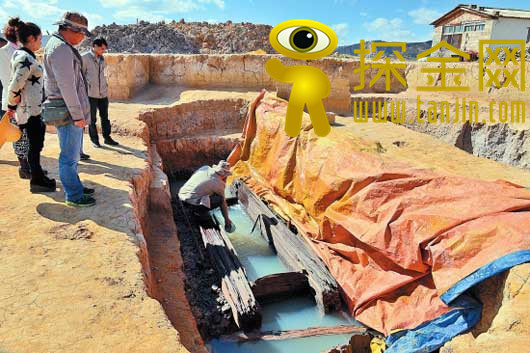Yesterday, the Chinese Academy of Social Sciences listed the large-scale Warring States tombs found at the archaeological site in Dabonna Village, Xiangyun County, as part of the six domestic archaeological discoveries in 2014. The archaeological activity was chaired by Hao Rui, deputy director of the Provincial Institute of Cultural Relics and Archaeology, and the Dali Bai Autonomous Prefecture Cultural Relics Administration and the Xiangyun County Cultural Relics Administration participated in the excavation since July this year. According to reports, the tombs are of high specification and unique burial style. According to the preliminary analysis of unearthed artifacts, the ruins and tombs date from the Warring States Period to the Western Han Dynasty. This archaeological discovery provided important material information for the study of the Bronze Age culture in the Yunnan Bohai region, and a new breakthrough was made in the exploration of ancient Dali civilization. The Daboona cemetery is currently one of the few high-standard cemeteries in the western Yunnan region. Many of its artifacts are similar to the artifacts found in surrounding stone graves. Six large tombs were found on site, all of which were high-standard tombs. A number of people were found to be buried together in wooden graves. This was the first time in Yunnan. The decoration on the two copper gongs unearthed is similar to that on the copper gongs that were unearthed in the earlier period, which proves that the two graveyards are closely related. The archeologists discovered large-scale Warring States period tombs and determined their scope of distribution. The reporter saw at the archeological site in Dabonna Village that this is an eastern edge of Xiangyunbazi near the local Yongsan and Xiangshan areas. The entire excavation area was 1,000 square meters and the excavation work was completed. Under the ground, the probing ground is a huge tomb with a total of 25, a maximum of 7.6 meters by 3.9 meters, facing the southwest. Each of these large tombs has a wooden raft and is constructed of heavy plates. The chamber is vertically arranged on the wall of the pit, and the inner top is formed by the horizontal support of the log. There are two square woods at the two ends of the raft. As a support, three thick planks are used to join together to form a raft, and three rafts (four in four) are stacked on both sides of the raft. Wooden planks are used as rafts. The side panels, before the Dabona Bronze gongs, stacked four blocks on each side of the base, indicating that the owner of the tombs was the upper ruler and was of a very high rank. Most of the burial styles were for multiple burials. There were 7 to 8 remains in each tomb. Archaeologists at Jilin University determined the bone composition of their remains and were aged from 20 to 25 years old. A total of more than 280 excavated earthenware objects (sets) were excavated. Pottery objects in the funerary objects were placed in the upper part of the tomb west, and a small amount was placed in the urn; bronzes were placed on both sides of the inner bottom of the urn and divided into copper and iron. Tin, pottery, stone, wood and rattan or bamboo graters. Bronze can be divided into weapons, production tools, life tools, decorations. Among them, there are the largest number of household utensils, mainly crickets; the weapons include swords, spears, axes, cymbals, cymbals, and arrowheads; the production tools include cutting and rolling bars and shuttle knives; and accessories such as bracelets, rings and canes. Among them, the rods, bronze swords, and copper coils are the most beautiful. In addition, a set of 4 tin wares has been unearthed with a fine decorative exterior. There is a bow in the wood and a wooden handle axe better preserved. Pottery is the most excavated artifact in this excavation. It can be divided into binaural, monaural, and ear-free cans, with less binaural and monaural cans depending on the type of instrument. There are cups, bowls, plates, and spinning wheels, all hand-made. At the same time, the same site of residence as the time of the tomb was found. Archaeologists cleared the site of pits, ditch, and house sites. The house was a bar-type building. It is proved that more than 2,000 years ago, people had already lived in the village of Bigbona. This is a major archaeological discovery. Waterproof Fishing Box,Waterproof Tackle Box,Waterproof Fishing Tackle Box,Waterproof Bait Fishing Box Cixi Jinfeng Plastics Co.,Ltd , https://www.nbjftoolkit.com